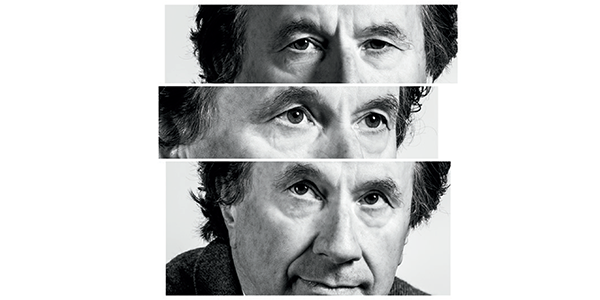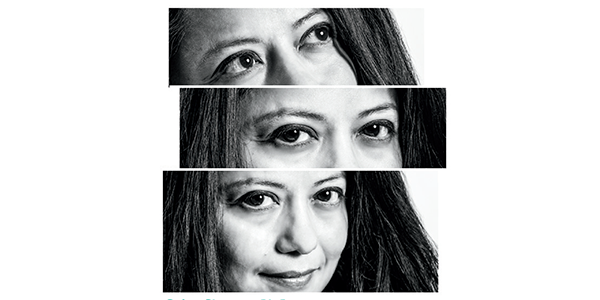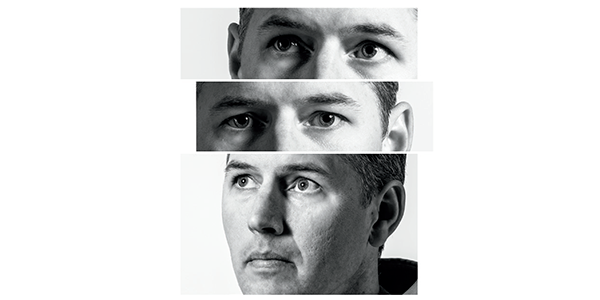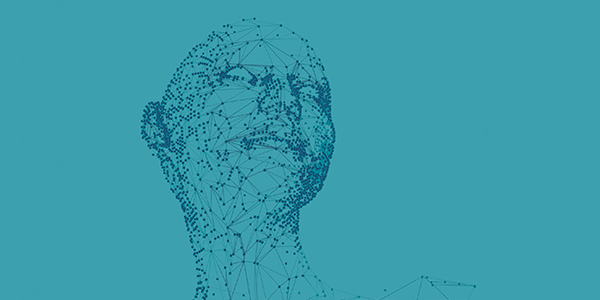As they peel away the complex layers that form the human immune system, scientists at La Jolla Institute for Immunology are revealing a fascinating path to a new generation of powerful vaccines they believe will soon turn the tide against some of the world’s deadliest diseases, including cancer and heart disease.
The potential for these vaccines is vast because they are far more advanced and in some cases function differently than traditional vaccines—the type that for many decades has relied on producing antibodies to prevent people from contracting polio, smallpox, and other infectious diseases. The new vaccines are much more therapeutic than preventive, and rely on advances in immunotherapy at the Institute to ramp up the human immune system and its T cells to actually attack tumors, viruses, and other diseases already afflicting the body.
“Thanks to the progress we’ve made in understanding the immune system, La Jolla Institute is on the cusp of one of the most important periods not just in our 30-year history, but potentially in the history of medical science,” says Mitchell Kronenberg, Ph.D., Institute President and Chief Scientific Officer. “The idea that Institute scientists are on the verge of developing vaccines for heart disease, cancer, Zika, and even HIV would have been unimaginable just a few years ago. We’re excited that in the near future these vaccines will emerge from the lab and enter the clinic where they will be used to save lives around the world.”
There is no Institute scientist more eager to see his vaccine help patients than Klaus Ley, M.D., founding head of the Division Inflammation Biology and a much-honored researcher who has been awarded “Distinguished Scientist” status by the American Heart Association. After decades of trying to understand the causes of atherosclerosis, Dr. Ley believes he and his team are close to developing a vaccine that will reduce or prevent inflammation in the arteries and, in turn, the buildup of plaque that causes deadly heart attacks and strokes.

One of the keys to Dr. Ley’s progress was a groundbreaking discovery several years ago in which he found that a specific type of immune cells known as CD4 T cells orchestrates inflammatory attacks on artery walls by receiving antigen-specific signals from other inflammatory cells in the vessel wall. He also showed that these immune cells behave as if they had previously seen the antigen that causes them to launch the attack.
an•ti•gen | any substance capable of inducing an immune response
“This was critical because it meant that the immune cells had memory of the molecule brought forth by the antigen-presenting cells,” Dr. Ley says. “That kind of immune memory is the underlying basis of successful vaccines and it was extremely promising because it demonstrated conceptually that it might be possible to develop a vaccine that could significantly dampen that inflammatory process.”
While vaccines traditionally have been thought of in terms of boosting the strength of the immune response, the concept here is entirely different, in that the vaccine is designed to enhance immune regulation to reduce the harmful immune response leading to inflammation.
A couple of years later, in 2014, Dr. Ley used those findings to conduct one of the most exciting
experiments in his career. He demonstrated that a sample vaccine his lab tested in mice resulted in a remarkable 40 percent reduction in arterial plaque. Today, Dr. Ley is gearing up to try his atherosclerosis vaccine in humans, possibly as soon as the end of 2018.
“Mice are not people and I assure you there will be setbacks and failures as we try to see what kind of results we can achieve in real patients with serious heart disease,” Dr. Ley says. “I want to stress this can’t succeed unless you have a large team of dedicated researchers all working together and with the assistance of expert collaborators like Alessandro Sette, Ph.D., a pioneer in vaccine development here at the Institute.”
Saving millions
With that proviso, Dr. Ley allows himself a few moments to imagine the impact of his vaccine if it does work in humans.
“If we achieve just a 30 percent reduction in plaque with this vaccine, we could potentially prevent 20 million heart attacks and strokes each year around the world if we gave it to all those at risk,” Dr. Ley says. “That would save millions of lives, which would fulfill the reason I went into immunology research in the first place. As optimistic as I am, I can’t predict what will happen, but I can tell you making this vaccine work has become the singular focus of my career. And, if it’s successful, it will be the most important thing I ever do in my life.”
That same kind of passion infuses the research of Sujan Shresta, Ph.D., Associate Professor in the Institute’s Center for Infectious Disease. Dr. Shresta’s quest is an area that doesn’t get as much attention as heart disease and cancer, but the reality is that one in three deaths worldwide is caused by infectious disease.
Dr. Shresta is a pioneering researcher in dengue virus infection, a mosquito-borne disease that afflicts nearly 400 million people around the globe annually. More recently, she has used her vast experience and applied it to researching dengue’s close cousin, the Zika virus, another mosquito-borne global threat that two years ago caused widespread panic.

Based on her outstanding scientific track record, and the fact that she always seems to be one step ahead in her research, it is a safe bet Dr. Shresta and her team will be among the first to develop a vaccine that works against both diseases. An example of one of her key discoveries was that antibodies, normally the immune system’s warriors in fighting pathogens, can actually cause harm. She proved the existence of a phenomenon known as antibody-dependent enhancement in which antibodies created in a mild form of dengue can prime the immune system to trigger the severest form of the disease, dengue hemorrhagic fever, when it encounters the virus again.
This research has made Dr. Shresta extremely cautious about basing potential dengue and Zika vaccines solely on an antibody response produced by the immune system’s B cells.
“I wasn’t at all surprised when it was revealed recently that a major dengue vaccine that took 20 years and $2 billion to develop can actually cause people to come down with a severe form of the disease,” Dr. Shresta says. “And I was disappointed that following the panic caused by the Zika outbreak two years ago that almost all companies rushing to launch vaccine projects based their research only on antibodies.”
Calling in T cells
It has motivated Dr. Shresta to pursue a different path to a vaccine, one she believes offers a much better chance of success. While retaining some of the best features of the traditional B cell antibody approach, she is investing much of her effort in developing a vaccine that relies on the response of T cells, the other major player in the body’s immune system. In a paper published last fall in Nature Communications, Dr. Shresta showed that mice rendered immune to dengue show “cross-protection” from subsequent Zika infection.
“We’re excited because we identified specific types of T cells capable of defending against both dengue and Zika without the danger of releasing the harmful cytokines T cells sometimes produce,” Dr. Shresta says. “Since we see these two as almost sister diseases, we now believe it’s possible to create one vaccine that would protect people against both dengue and Zika.”
WE’RE EXCITED BECAUSE WE IDENTIFIED SPECIFIC TYPES OF T CELLS CAPABLE OF DEFENDING AGAINST BOTH DENGUE AND ZIKA WITHOUT THE DANGER OF RELEASING THE HARMFUL CYTOKINES T CELLS SOMETIMES PRODUCE.
Although she acknowledges proving her theories will require a number of years of intensive research, Dr. Shresta is thrilled for the opportunity to fulfill her dream of using her scientific skills to help people most in need around the world.
“Dengue is now in 128 countries, afflicting half the world’s population, and is spreading from tropical regions to more temperate countries, including my homeland Nepal,” she says. “It’s only a matter of time before Zika reaches all these countries as well. The toll on human health and resources has already been devastating. I can’t tell you how rewarding it would be for me to play a role in stopping these two diseases in their tracks and relieving some of this tremendous burden.”
As difficult as it has been to develop a vaccine for dengue and Zika, the quest for an HIV vaccine has been several orders of magnitude more complicated and challenging. In fact, after decades of trying, a number of researchers around the world have abandoned the effort, deeming it impossible.
Rising to the challenge
Fortunately, for the field of medical research, Shane Crotty, Ph.D., Professor in the Institute’s Division of Vaccine Discovery, is a most resilient and tenacious investigator. As a leading expert on how vaccines work, Dr. Crotty in recent years has invested significant time and energy on HIV, and says he’s committed to finding a vaccine no matter how long it takes.
HIV IS STILL A TREMENDOUS GLOBAL BURDEN…ONLY HALF OF THE 36 MILLION PEOPLE INFECTED WITH HIV ARE ABLE TO GET THE MEDICATIONS NEEDED TO CONTROL THE VIRUS.
“This is one of the most challenging scientific problems we as immunologists will likely ever face,” Dr. Crotty says. “We’re taking on a chameleon-like virus that for several reasons is very hard to see for the human immune system, unlike almost all other pathogens that invade the body. Even as an optimist I acknowledge the strong possibility of failure. At the same time, the hard work we’ve been putting in is beginning to pay off, and I think we have a real moral imperative to keep trying, whatever the odds.”
Dr. Crotty, whose reputation as a leading expert in T cell function and vaccine development led Thomson Reuters to include him in its annual list of the world’s most influential scientific minds, says the key to the progress so far has been breaking down the effort into smaller pieces that can be attacked and solved individually before moving on. That, and working with equally talented researchers like William Schief, Ph.D., at The Scripps Research Institute, along with Dr. Crotty’s other colleagues in the International AIDS Vaccine Initiative.
One of Dr. Crotty’s own discoveries was foundational in launching the effort. His discovery of a pivotal piece of the body’s mechanism for switching on the production of antibodies—published in Science in 2009—showed the BCL6 gene was like an on and off switch, or master regulator, that triggers the production of a certain group of helper T helper cells known as follicular helper T (Tfh) cells, which in turn tell B cells to make more protective antibodies.

More key discoveries followed: Dr. Crotty demonstrated that Tfh cells are critical for triggering broadly neutralizing antibodies that might combat HIV. The team also discovered that the type of B cell that produces the antibodies is rare in humans but that a vaccine could stimulate them to produce more and stronger antibodies. A major advance came when these antibodies were injected into healthy monkeys and prevented the animals from contracting an HIV-like virus. This string of successes has Dr. Crotty envisioning human clinical trials in the not-too-distant future.
“We’re realistic enough to know we’ve got years of work ahead but it was really exciting to show that an HIV vaccine is possible in concept,” Dr. Crotty says. “With all of the steps we’re taking, including the setbacks, we learn more about the intricate processes at work in the immune system and that’s critical to informing our future research.
“I’m often asked why I’m pursuing something so difficult, especially when anti-retroviral drugs have turned AIDS into more of a chronic, manageable disease. The truth is that HIV is still a tremendous global burden. Only half of the 36 million people infected with HIV are able to get the medications needed to control the virus. One million people still get infected with HIV every year, and a million still die annually from AIDS-related illnesses.
“This is why finding an HIV vaccine is such a priority for La Jolla Institute and our partners,” Dr. Crotty adds. “Participating in this huge, complex collaborative effort has been incredibly rewarding and the thought that I’m contributing to an effort that might positively impact the lives of millions around the world is extremely gratifying.”

Cancer
IMAGINE A PERSONALIZED CANCER VACCINE SO POWERFUL THAT IT TARGETS AND DESTROYS THE SPECIFIC TUMOR ATTACKING YOUR BODY—AND THEN PROTECTS YOU FROM THE MALIGNANCY RECURRING FOR THE REST OF YOUR LIFE.
Until recently, such a scientific concept would have been unthinkable. Yet sometime this fall, a vaccine just like it will be tested in 20 patients with advanced cancer.
If this vaccine—which stimulates the body’s own T cells to specifically zoom in on a tumor’s mutations—works as planned, there will be an amazing bonus feature that would launch the vaccine into the realm of one of the greatest discoveries in modern medical science.
“What makes this kind of cancer vaccine potentially game-changing is that it can be deployed not just against one type of cancer but almost every type of solid-tumor cancer that afflicts humans,” says La Jolla Institute Professor Stephen Schoenberger, Ph.D., the scientist whose pioneering T cell research paved the way for the development of the vaccine.
The reason the vaccine offers so much hope, and why it would work against many types of cancer, is the ability of T cells to recognize signature features that set tumors apart from normal tissues. Called neoantigens, these “molecular red flags” result from the highly variable mix of mutations harbored by each tumor. One of Dr. Schoenberger’s breakthroughs was learning through genomic sequencing and bioinformatic analysis that these neoantigens are detectable much more frequently than previously thought.
The key discovery came when Dr. Schoenberger and his team learned they could take a small sample of a patient’s tumor, sequence its DNA and RNA to determine which neoantigens were the most recognizable, and then design a personalized vaccine for each patient that would help guide T cells toward their target. The T cells would then not only shrink and eliminate the tumor, they would also be on guard to offer future immunity if any cancer cells ever recurred.
Ezra Cohen, M.D., who co-directs the San Diego Center forPrecision Immunotherapy together with Dr. Schoenberger, will oversee the clinical trial. As a Professor of Medicine at the Moores Cancer Center and translational specialist, Dr. Cohen is hoping the results will confirm the team’s research so he can offer real hope to the type of patients whose lives he’s seen devastated by cancer.
“This is a potentially world-changing vaccine because it would enable us to remove the death sentences patients have been given and actually give them a future where they can resume normal productive lives with their loved ones and not have to worry about their cancer coming back,” Dr. Cohen says. “It’s exciting personally because helping bring this type of incredible research into the clinic is why I went into translational medicine in the first place.”
Dr. Schoenberger says if the vaccine is successful, it would be “a 12 on a scale of 10” personally, and likely the major achievement of his long career.
“We’re particularly proud of this work because it’s not the result of government funding,” Dr. Schoenberger says. “It came about through the amazing generosity of non-profit organizations and individual donors who have believed in and supported our research over the years. We could not be more appreciative, and it demonstrates the remarkable power of philanthropy to advance science.”
“What is exciting and makes this vaccine potentially game-changing is that it would be effective not just against one type of cancer but almost every type of solid-tumor cancer that afflicts humans.”


